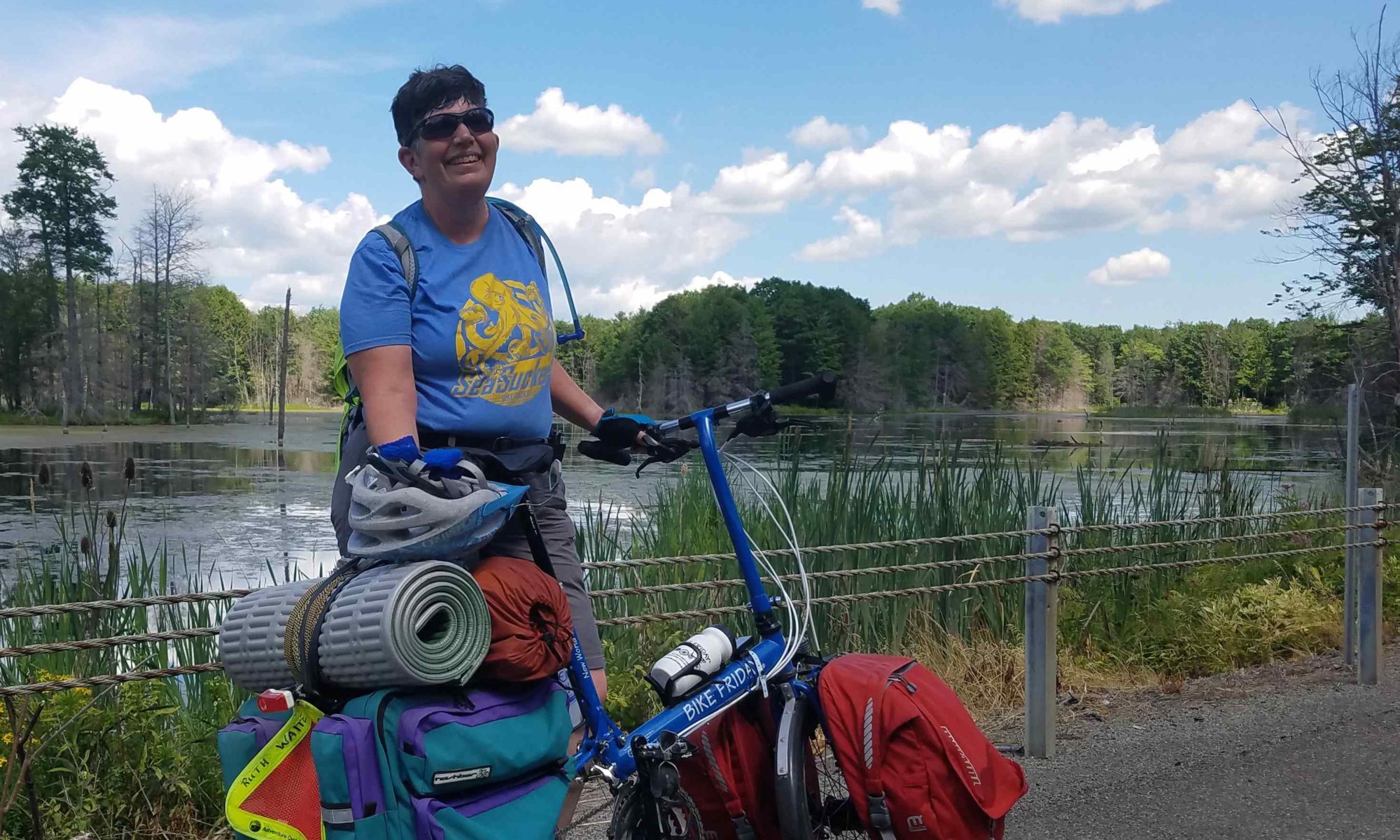August 5.
The last official day of our ride together was packed with activities for me. First off, we got to sleep late (breakfast wasn’t until 6:30, which means lights on at 6:00 am!) We only had 20 miles to go to reach the coast.
We kept a pretty slow pace and stayed fairly close together most of the way. I was amazed by the scenery, but didn’t get too many photos. There weren’t good places to stop and I don’t like to try to take photos while I ride. There was one road where the trees formed a fairly low canopy over the road with the Spanish moss hanging down that was just beautiful. I would have loved to get some pictures of that. Also, every time we went over a bridge, we could see a very long ways and see the marsh grasses and little water ways. This is the first time I have been to any of these barrier islands along the coast. I had no idea of the landscape, and I was fascinated by it. We also saw quite a few water birds along the way.



We didn’t stay completely together, but we were to meet up in the parking lot near the lighthouse. When we got there, we stopped for lots of pictures, and then we waited to give our media team time to set up on the beach before we set out. We were supposed to ride together over the boardwalk to the beach, but we missed the start to the path! A garbage truck, the team doing their daily work, happened to be blocking the start of the boardwalk. So as soon as we turned we had to get off and walk our bikes through the sand. We could see the boardwalk right beside us. A handful of people actually made the course correction, but most of us just continued walking down to the beach.



Then followed a great celebration! We dipped our tires in the Atlantic, held our bikes up in the air in victory (mine’s kind of heavy and I needed help to lift it), and played in the ocean for a good long while, with hugs all around. Though we were all planning to attend the banquet in the evening, most of us were departing in the next few days and we wanted to make sure to say goodbye to everyone in case we didn’t get a chance later. We were also planning to stay in different locations overnight. Some, whose relatives had come for the banquet, had hotel reservations for Saturday night, some of us were staying in the church on Tybee Island, and some of us planned to stay in the church in Savannah. Even though I had heard others’ plans, I could only keep track of myself, so I also made sure I had a chance to talk to everyone.



We had ridden our bikes all the way across the country! Across mountains, and across deserts, through dry heat and through very hot and humid days, through snow, sleet and rain, and we had all gotten there safely. At the beginning, we were strangers, but over nine weeks of living in close quarters, we had become a band of brothers and sisters–different ages, different walks of life, different quirks and annoying traits–but overjoyed to share that moment of victory together.

The celebration was fun and marked a big accomplishment, but for me the ride would go on another two weeks. I had plans to join another Fuller Center Bike Adventure group coming down the East Coast and finish in Key West. As I joined in the celebration, what the coming two weeks would bring was also on my mind. I was sorry to see my companions leave and a little nervous about joining a new group. I was happy that Steve would be joining the East Coast group with me, along with a couple of other people who had been with us the final week of the cross country trip.
We had a final circle up there on the beach where we shared our goodbyes and our thoughts about our journey together, and then we headed off with relatives or to our respective churches for the afternoon. In the evening we would get back together for a banquet celebrating the tenth anniversary of the Fuller Center Bike Adventure, and I will tell you about that in another post.

































































